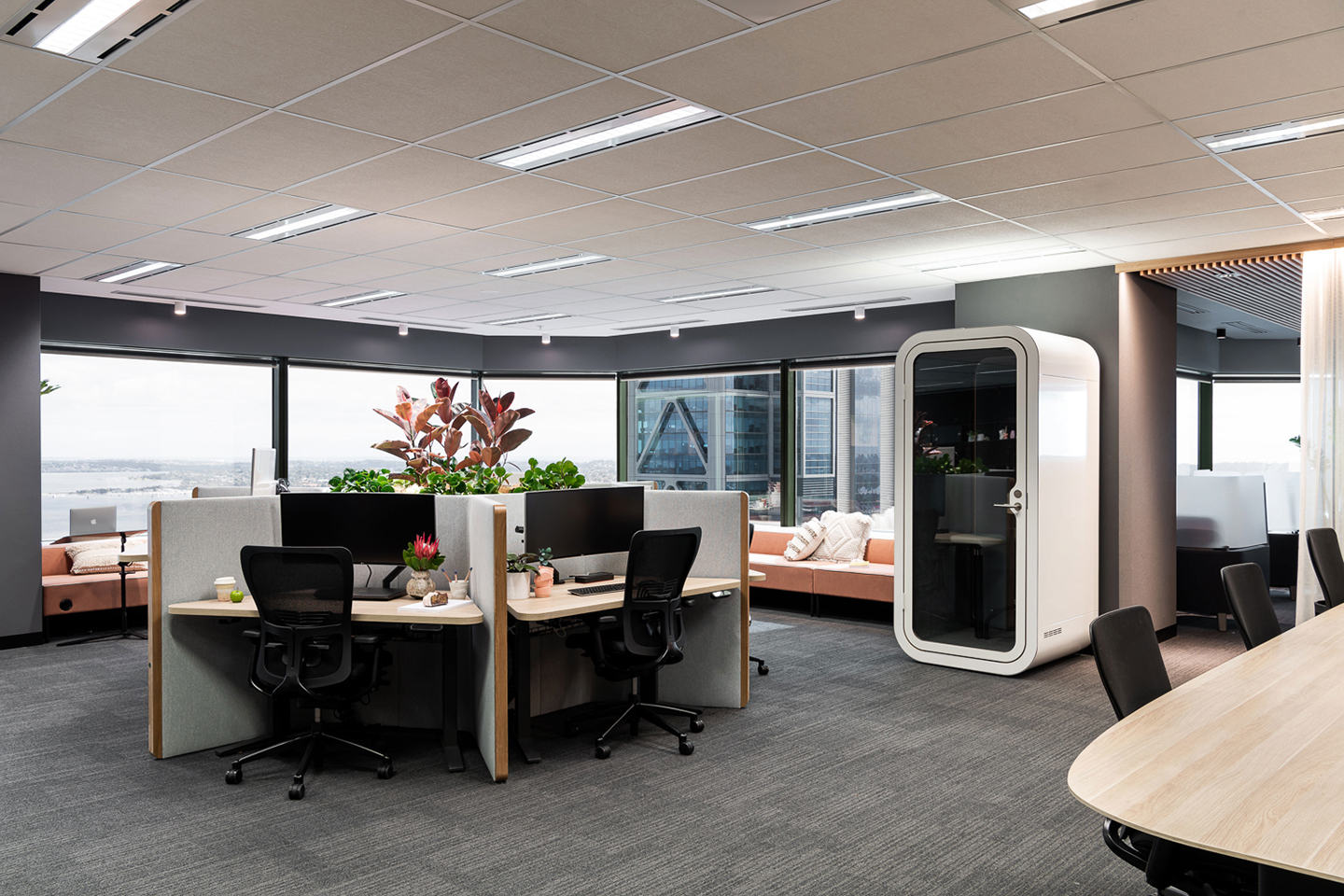
When an organisation decides to expand on their current workspace accommodation by taking another floor in their existing building, the typical approach is to ‘copy and paste’ from an existing floor. Backed by curiosity and considered research, this project rejects that methodology - reflecting a commitment by the designers to create a space that accommodated the previously unexplored possibilities for the client’s work environment.
Acting like a lab to test new ways of working for the rest of the company, the new floor brings together a microcosm of working experiences that can be interrogated in the interests of learning and ongoing performance. Various mixed agile working models have been introduced in different modes – creating different focus, social and health and wellness settings. Intentionally visible to the shared innovation space on the same floor – the space sparks, rather than forces, interest in the wider workforce.
A form of philosophical and spatial experimentation, the project welcomed constructive feedback in order to evolve and set precedence for a future working paradigm. The controlled, lab-like environment meant that designers could observe and identify the variables that best supported productive work and measure why some settings were more successful than others - prioritising wellness, socialisation, flexibility and minimised waste.
In a technologically enabled age, people are empowered to work wherever they feel they perform their best -whether that is from home, cafe, restaurant or hotel. Mindful of this fact, this project is an environment where the employees, visitors and clients can experiment with new ways of working – softening the cooperate setting with cues from domestic, hospitality and hotel spaces without compromising the health and safety, ergonomic, operational and functional imperatives of corporate design.


The project identifies physical socialisation as a key priority but sets itself apart by providing choices that suit individual and team nuances. Balancing focus and social space, designers referenced the familiar corporate aesthetic to signpost the design being a ‘work’ space but – through engagement with diverse groups – sets up a space where boundaries can be pushed. Thanks to the open-mindedness of the client, freedom was given to fail and learn from mistakes collectively.
Beyond the qualitative engagement, analysis was undertaken on quantitative observations that identified a 65% desk utilisation rate – measuring when workers used a particular space or ‘signs of life’. This data enabled confidence in exploring shared space which was comprised of diverse forms, ergonomics and functionalities to drill down deeper to see if some settings would be in higher demand than others and understand why and whether this changed over time.








